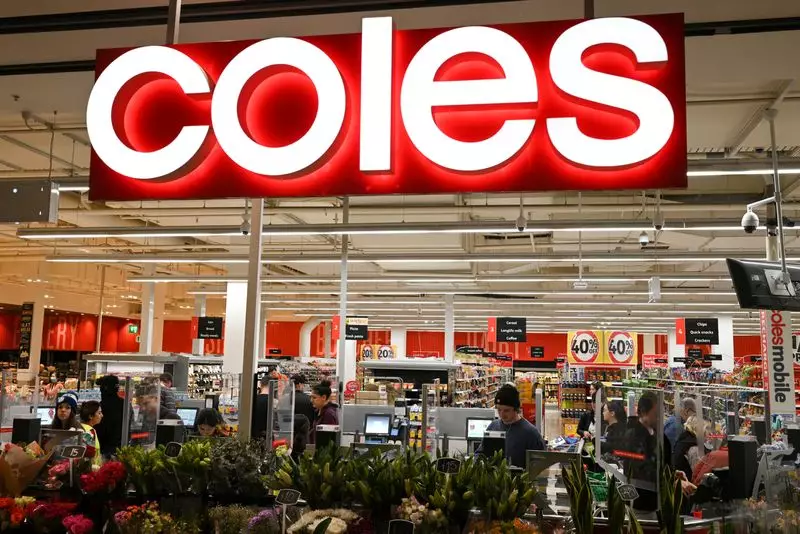Australia’s grocery landscape is undergoing significant shifts, with Coles Group experiencing a marked slowdown in comparable sales during the first quarter of its fiscal year. The company’s comparable sales only managed to reach a growth rate of 2.4% for the 13 weeks ending on September 29, a decrease from the 3.6% demonstrated in the previous year. This reduction can be attributed to lower shelf prices as the supermarket giant responds to mounting public pressure regarding the ongoing cost of living crisis affecting customers across the nation.
Despite this slowdown, Coles reported a notable increase in total group sales revenue, achieving a 2.9% rise to A$10.55 billion ($6.94 billion), which surpassed market expectations of A$10.51 billion. This discrepancy raises questions about the underlying strategies employed by Coles and highlights a complex relationship between pricing strategies and consumer purchasing behavior during economically uncertain times.
In the current economic climate, consumers are increasingly seeking value and savings in their shopping experiences. CEO Leah Weckert emphasized Coles’ commitment to assisting customers in navigating these hurdles through various initiatives such as promotional discounts, loyalty programs like Flybuys, and exclusive store brands. The effectiveness of these strategies may reflect the company’s responsiveness to market demands, but they also highlight a reactive rather than proactive approach to customer engagement.
Interestingly, while Coles’ supermarkets division benefitted from discount-driven sales, its e-commerce segment observed a remarkable uptick in revenue. This suggests that as shopping habits shift increasingly towards online platforms, Coles’ investment in digital features and enhancements is paying off. Such a trend indicates a potential pivot point for grocers as they aim to cater to a generation that prioritizes convenience without compromising on value.
Coles’ performance juxtaposed against larger competitor Woolworths presents an intriguing picture. Jefferies analysts noted that while both companies experienced challenges with sales, Coles’ outlook was notably more optimistic, devoid of the margin pressures highlighted by its rival. This divergence could suggest that Coles is better positioned to navigate current market conditions or, conversely, may imply a discrepancy in how both companies are addressing underlying operational challenges.
In a significant move to bolster efficiency, Coles announced plans to construct its third automated distribution center located in Truganina. This ambitious undertaking is part of a larger strategy anticipated to generate A$105 million in cost savings for the fiscal year. Such investments demonstrate a continued belief in their operational capabilities despite broader market pressures.
As Coles and Woolworths compete in an increasingly challenging environment, the emphasis on value and efficiency will likely continue to dominate grocers’ strategies. While the initial indicators for Coles’ first-quarter sales signal some cause for concern, its adaptive strategies in the e-commerce realm and substantial investments in automation may ultimately serve to strengthen its position in the marketplace.
Overall, as stakeholders observe the structural changes within Coles, it will be crucial to watch how the grocery chain could potentially balance price competitiveness, customer engagement, and operational efficiency amid an evolving retail landscape. The striving to regain momentum in comparable sales while maintaining growth in total revenue will be paramount for Coles as it navigates forward.

